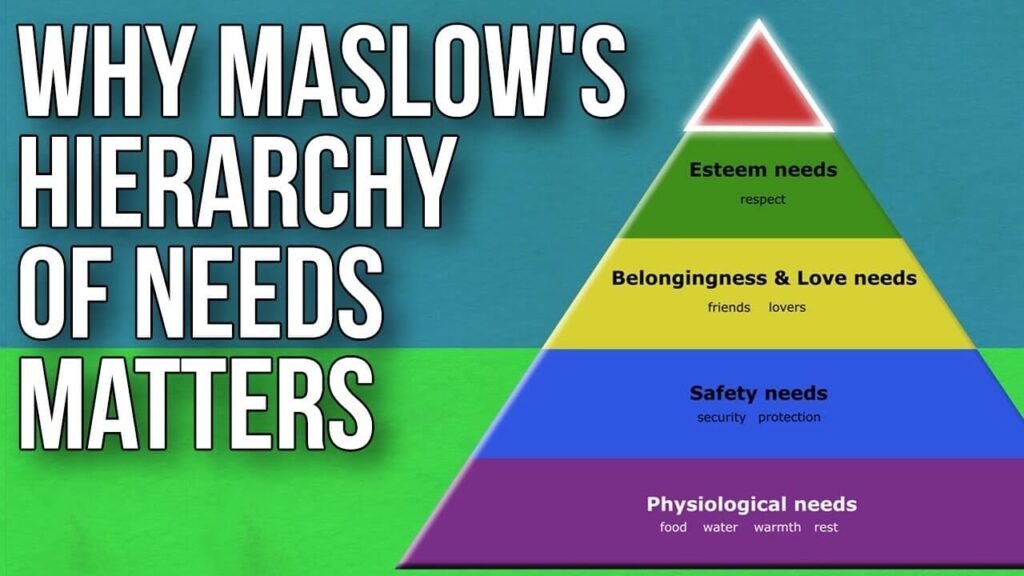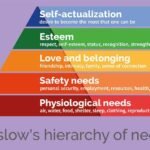Understanding Maslow's Hierarchy of Needs: A Comprehensive Guide to the Theory

Welcome to our comprehensive guide on Understanding Maslow's Hierarchy of Needs.
In this article, we will delve into the fascinating concept introduced by Abraham Maslow that explores the fundamental human needs and how they shape our behaviors and motivations.
Maslow's Hierarchy of Needs is a renowned psychological theory that categorizes human needs into five levels, each building upon the previous one.
By understanding this hierarchy, we can gain valuable insights into human behavior, personal growth, and self-actualization. So, let's embark on this enlightening journey, exploring the intricacies of Maslow's Hierarchy and its implications in our lives.
What is Maslow's Hierarchy of Needs?
Maslow's Hierarchy of Needs is a well-known concept in psychology that examines the various levels of human motivation. This theory suggests that to reach self-actualization, individuals must first satisfy their physiological needs, such as food, water, and shelter. After these basics are met, they move up the hierarchy to attain safety, love, belonging, esteem, and finally, personal growth.
In this comprehensive guide, we dive deep into this concept and discuss its applications in various fields.
To gain a better understanding of Maslow's Hierarchy of Needs, it is necessary to explore the five levels of the theory. At the bottom of the pyramid are the physiological needs, which are essential for survival. Above that is the layer of safety needs, such as physical and financial security.
The third tier involves the need for love and companionship, which involves forming meaningful relationships. The fourth level deals with esteem needs, such as recognition, self-worth, and respect. The highest level is self-actualization, which drives individuals to reach their full potential and achieve their life goals.
Maslow's Hierarchy of Needs is often used in the fields of psychology, education, and management. In psychology, it helps therapists understand their clients' motivations and guide them toward self-actualization.
In education, it informs educators about the importance of creating a secure and inclusive learning environment that meets students' physiological, safety, and belonging needs. In management, it highlights the significance of recognizing and fulfilling employees' needs to improve job satisfaction and productivity.
By understanding this concept, individuals and professionals can gain insight into human motivation and strive for a more fulfilling and meaningful life.
The Five Levels of Maslow's Hierarchy of Needs
Maslow's Hierarchy of Needs outlines the various stages of human motivation and the requirements for individuals to reach their full potential. Starting at the bottom of the pyramid, physiological needs encompass the basic necessities of life, such as food, water, and shelter.
Unless these essential needs are met, individuals cannot progress to higher levels.
The subsequent level of the hierarchy is safety needs, which include the need for physical security and financial security, as well as psychological security, offering a sense of stability and reliability. After these requirements are met, individuals can move on to the love and belongingness needs.
This level focuses on the need for social attachments, including friendships and intimate relationships, as well as the need for acceptance and belonging in a community.
Above the love and belongingness needs are the esteem needs. This tier encompasses the need for self-esteem, such as feelings of self-worth and confidence, as well as the need for recognition and respect from others.
Satisfying these deficiency needs allows individuals to develop a positive self-image and a feeling of accomplishment.
Finally, the highest level of the pyramid is the self-actualization need. Here, individuals strive to reach their full potential and experience personal growth and fulfillment.
In short, Maslow's Hierarchy of Needs provides a framework for understanding the different stages of human motivation.
By recognizing and addressing these needs, individuals can work towards self-actualization and lead a meaningful life.
How is Maslow's Hierarchy of Needs Used?
Maslow's Hierarchy of Needs is widely employed across a variety of fields, including psychology, education, and business.
In psychology, it is utilized to understand and analyze human motivation and behavior.
By recognizing which tier of needs individuals are concentrating on, psychologists can create interventions and therapies tailored to their requirements.
In education, Maslow's Hierarchy of Needs is utilized to construct learning environments that are supportive and inclusive.
Educators can ensure that students' physiological and safety needs are met before addressing higher-level needs like companionship and self-esteem. Similarly, in the business world, the hierarchy is regularly applied to employee motivation and satisfaction.
Employers can design workplace policies and programs that prioritize the fulfillment of employees' needs, resulting in increased productivity and job fulfillment.
The application of Maslow's Hierarchy of Needs stretches beyond individual contexts. It is also used in social and community development projects.
By comprehending the needs of a community, policymakers and organizations can design programs and interventions that address the particular challenges faced by individuals and groups.
This methodology encourages holistic development and empowers communities to meet their own needs.
Additionally, Maslow's Hierarchy of Needs is applied in marketing and advertising.
Companies use the theory to identify consumer needs and modify their products and services accordingly.
By aligning their offerings with the different levels of needs, businesses can devise successful marketing campaigns and build strong customer relationships.
In healthcare, Maslow's Hierarchy of Needs is applied to guide patient care.
Healthcare professionals consider the physiological needs of patients, such as nutrition, hydration, and pain management, as a priority.
Once these needs are fulfilled, they can address higher-level needs, such as emotional support and self-esteem.
By understanding the hierarchy of needs, healthcare providers can deliver patient-centered care that promotes overall well-being.
Furthermore, Maslow's Hierarchy of Needs is utilized in personal development and self-improvement. Individuals can use the theory as a framework to identify their own needs and prioritize self-care.
By recognizing and addressing their needs at each level, individuals can work towards self-actualization and personal advancement.
In conclusion, the application of Maslow's Hierarchy of Needs is broad and varied. It offers a useful framework for understanding human motivation and behavior in various contexts. Whether it is in psychology, education, business, community development, healthcare, or personal development, the
Criticisms of Maslow's Hierarchy of Needs
Maslow's Hierarchy of Needs has been subject to disapproval by several academicians and researchers. Chiefly, its simplicity has been questioned, since it appears to reduce the various complexities of human motivation to a mere five levels without taking into consideration individual disparities and cultural variety in needs.
Furthermore, its reliance on a Western, individualistic point of view has been criticized, as it does not adequately account for the role of communal and collective needs in motivating individuals.
In addition, the hierarchy's assumed linear progression has been seen as a shortcoming, as research has demonstrated that people can be driven by numerous needs at the same time, not necessarily adhering to the strict hierarchy.
Moreover, the influence of external factors such as economic circumstances and systemic imbalances on a person's ability to fulfill their needs has been disregarded, which is considered a limitation of Maslow's Hierarchy of Needs.
Despite these criticisms, the hierarchy remains a prominent and influential theory in the field of psychology, being a well-known name in the study of Maslow.
Implications of Maslow's Hierarchy of Needs
Maslow's Hierarchy of Needs has far-reaching consequences for various aspects of human life, providing valuable insights into individual behavior, motivation, and well-being.
At the foundation of this theory lies the recognition that satisfying basic physiological needs such as food, water, and shelter is essential for survival.
This highlights the importance of addressing these necessities to enable progression towards self-actualization.
Furthermore, failure to meet these needs can lead to frustration and dissatisfaction, potentially having negative impacts on physical and mental health.
The implications of this theory can be seen in the fields of education, healthcare, and business.
By understanding the different levels of needs, professionals are better equipped to design strategies that cater to individuals.
For instance, in education, creating a supportive environment that attends to students' physiological and safety needs allows them to focus on higher-order needs like belongingness and self-esteem.
In healthcare, understanding the hierarchy of needs can inform patient care and treatment plans, ensuring that physical and emotional needs are met for successful recovery.
Likewise, in business, knowledge of the hierarchy can guide employee motivation and satisfaction, leading to increased productivity and organizational success.
Additionally, Maslow's Hierarchy of Needs has implications for personal growth and self-actualization. This theory suggests that individuals have an innate drive to reach their fullest potential and achieve self-actualization.
By recognizing and addressing various needs, individuals can take action to pursue activities and relationships that align with their higher-level needs. Moreover, it emphasizes the importance of self-reflection and self-awareness in pursuing personal goals.
The implications of this theory can thus help guide individuals in their quest for self-actualization, leading to a more fulfilling and purposeful life.
Finally, the implications of Maslow's Hierarchy of Needs can be seen at the societal and policy levels. By understanding the hierarchy of needs, policymakers can craft systems and programs that prioritize individuals' well-being and fulfillment.
For example, providing access to basic necessities like food, water, and housing can address physiological needs and promote social equity. Additionally, recognizing the importance of higher-level needs like belongingness and esteem can inform policies that promote inclusivity, social support, and positive social relationships.
Considering the implications of Maslow's theory in policy-making can ensure the development of interventions that support the overall well-being and flourishing of individuals and communities.
Leave a Reply




Related Posts